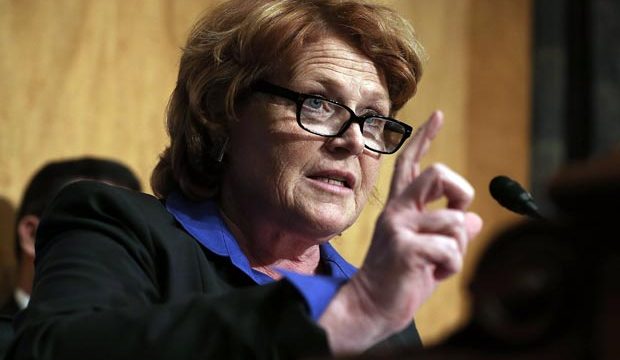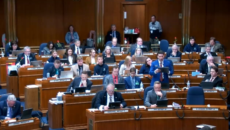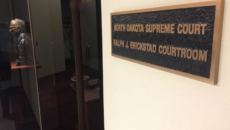Heidi Heitkamp For Governor In 2016?

heidi heitkamp
We’re well into the low-ebb in North Dakota’s political cycle. The elections are over. The legislative session is over. Now there’s little to do for the next several months other than speculate about what may take place during next year’s campaign season.
One rumor I’ve been hearing persistently for a while now from credible sources is that Senator Heidi Heitkamp may be considering a run for governor in 2016 when Governor Jack Dalrymple’s term is up.
Could it be? Who knows. It’s a rumor.
I’ve long been told by various political observers in the state on both the left and the right that being governor has always been Heitkamp’s real goal. She ran for the Senate more out of expediency, and her party’s utter lack of convincing candidates, than actual desire to serve in Washington DC. I’m told that Heitkamp’s ambitions lay more with being governor and the hub of an emerging Democrat political machine in the state.
That would make sense. For Democrats, the path out of the political wilderness lays through the governor’s office. The power of that office lays not only in policy-making, but also in the power of patronage. Republicans have a deep bench of candidates who can run for statewide and local elected office because Republicans have owned the Governor’s office for more than two decades. That means decades of Republicans not only controlling the policy agenda but also getting appointments to various state positions.
Democrats, on the other hand, have a paucity of well-known and qualified candidates because state government has essentially been in the control of Republicans. Of the last two Democrats two win statewide elected office, one (former Superintendent Wayne Sanstead) has retired and the other (former Ag Commissioner Roger Johnson) has left the state to serve as president of the National Farmer’s Union.
Heitkamp was a godsend for Democrats in 2012 because she was their only real hope for winning any statewide office. And she barely won. All of that ties back directly to the power of the governor’s office.
A US Senator simply doesn’t have that sort of influence over state politics. Being elected to federal office can certainly open doors to national political money – funds raised nationally by former Democrat Senators Kent Conrad and Byron Dorgan as well as former Democrat Rep. Earl Pomeroy were long campaign lifeblood for North Dakota liberals – but it lacks the practical functions and controls in the state the governor’s office have.
If there’s one thing we know about Heidi Heitkamp, it’s that she’s relentlessly ambitious and thirsty for power. Assuming her goal is to revitalize her state party, a move to the governor’s office would make sense. And it wouldn’t be much of a risk. She’d be running for governor with two years left on her Senate term. If she won, she could appoint her successor to the Senate and enjoy serving as the cornerstone of her state party. If she lost, she could keep her Senate seat run for re-election in 2018.
It’s a move that has a lot of reward for Democrats, and not a lot of risk.







